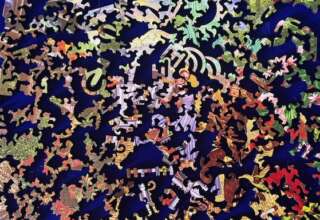
Chodorow proposed that men come to recognize during mid-life that they are isolated in their autonomy. Mature men conclude that they need to learn much more about relationships and, even more broadly, about community. This emerging realization is a critical component of the late midlife transformation for most men. Chodorow suggested that women tend to move in exactly the opposite direction. Midlife women recognize that they need to begin differentiating themselves from other people. They must find their own independent identities. They look beyond their most prized and intimate relationships with spouses and children to a wider world of individual career achievement.
What about today—in the midst of the 21st Century? Is this gap in the world of men and women still as great? Are not young women just as likely as young men to value their independence? Are young men now more likely to be praised for their EQ? Don’t young women now face many of the challenges that were traditionally in the domain of male upbringing and aren’t men more likely to exhibit a modicum of interpersonal sensitivity in their dealings at home and at work? Even more fundamentally, was the gender gap ever that great? Do men really live on one planet and women on another planet as one best-selling author (Gray, 2012) on male/female relationships proposed several years ago? Don’t men and women both live on planet Earth and face the same interpersonal challenges?
Splitting of Self
Several decades ago, Carol Gilligan and her associate (Brown and Gilligan, 1992) made another important discovery regarding one’s sense of self—this time while studying the development of young women as they reasoned about challenging ethical issues. Frustrated by the evidence she was getting, Carol Gilligan at one point apparently stopped an interview and asked her interviewee in an exasperated tone if what she was saying is “really” what she believes. At this point, her young female subject admitted that her response to this ethical dilemma was based on what young women (and perhaps all women) are supposed to say.
Gilligan then shifted the direction of her research to find out what her young women were really thinking and feeling. She found that most of the young women she was interviewing offered two quite different versions of themselves to the world. There is the polite, thoughtful and caring self that they offer out in public. Then there is a second self that is something of a rogue. This self is perhaps a bit greedy, self-serving and even rude. There is one “self” that is the “good girl” who does and thinks what society expects. There is another “self” that relates to what the young woman actually thinks, feels (and would like to do). In an interview with Charlie Rose, Gilligan speculates that this splitting many occur even earlier in the lives of young men.
The Coherent Self
While these two selves might be confined to the middle-class women that Gilligan was interviewing, they might very well be found in the heart and soul of other young people. We might ask, is this splitting a recent phenomenon among young women and men? Perhaps, it has simply become more evident given reduction in the pressures for young people to conform to powerful societal expectations and cultural traditions (at least in many parts of the world). If nothing else, I would suggest that this splitting is likely to be widespread in a world that is saturated as Ken Gergen (2000) suggests with multiple images of self. Splitting is even more likely if our sense of an authentic self is reduced in size, as Christopher Lasch (1984) suggests, as we retreat from the many challenges of our time.









